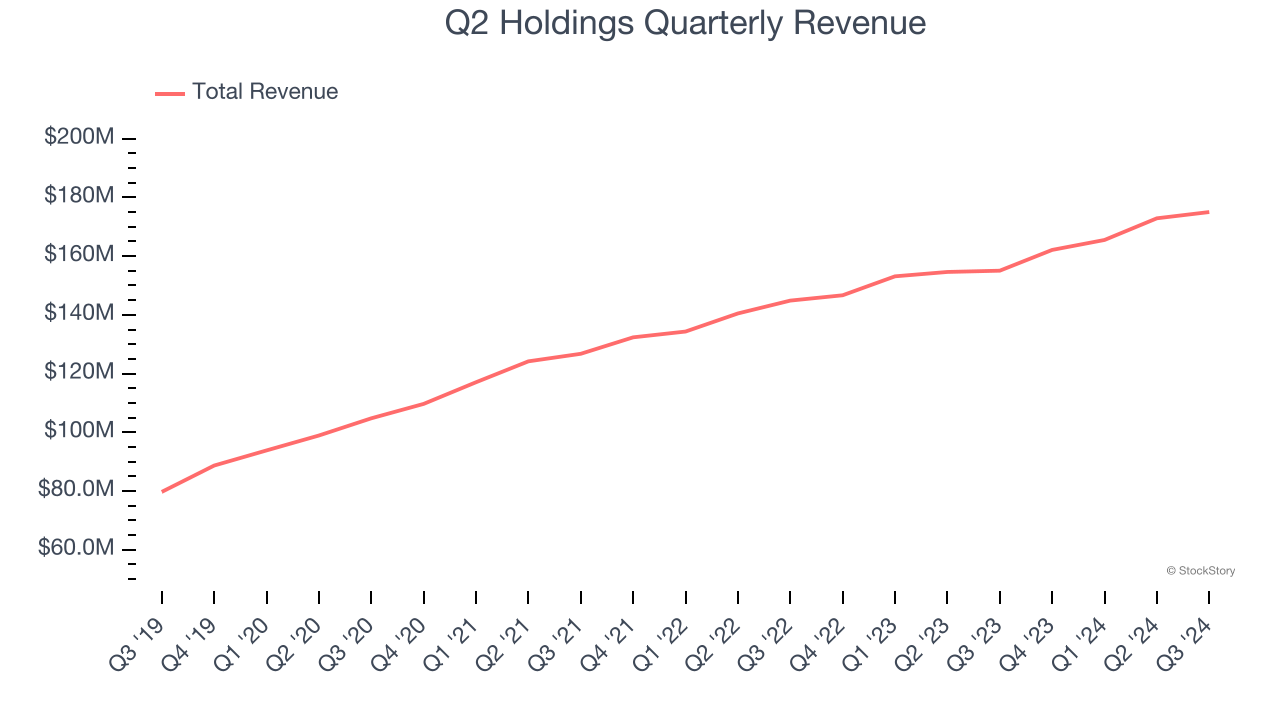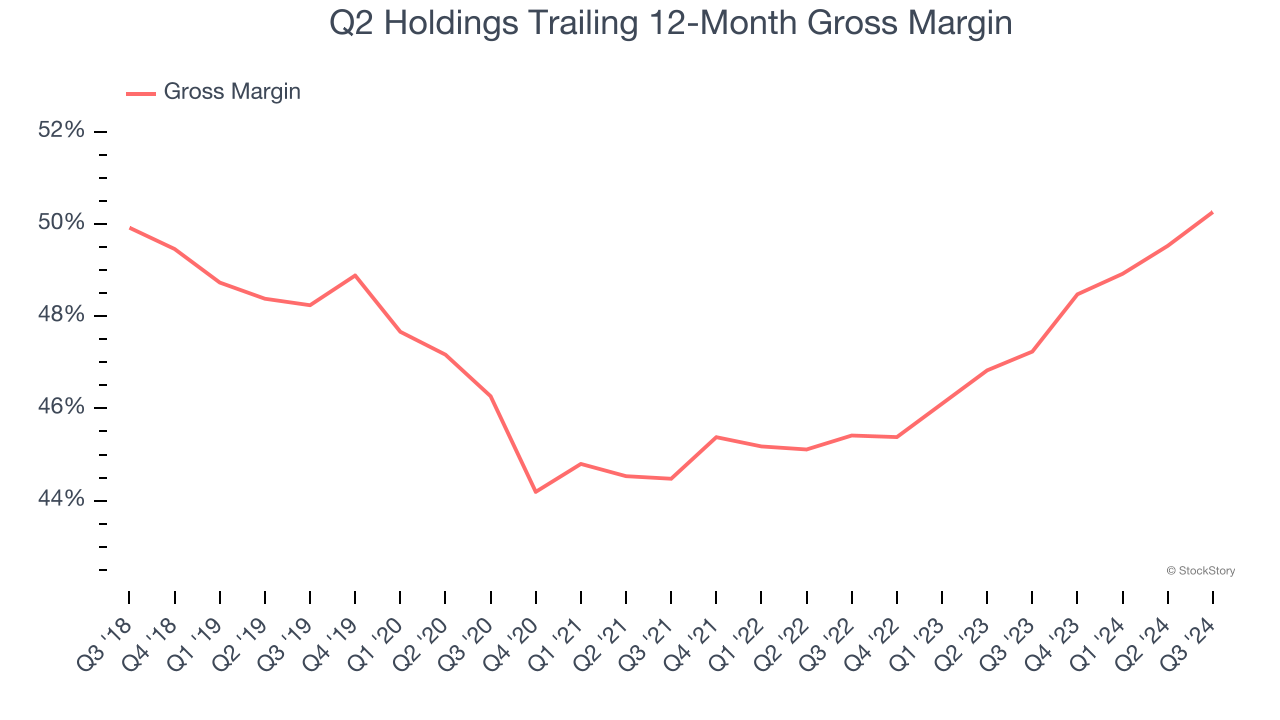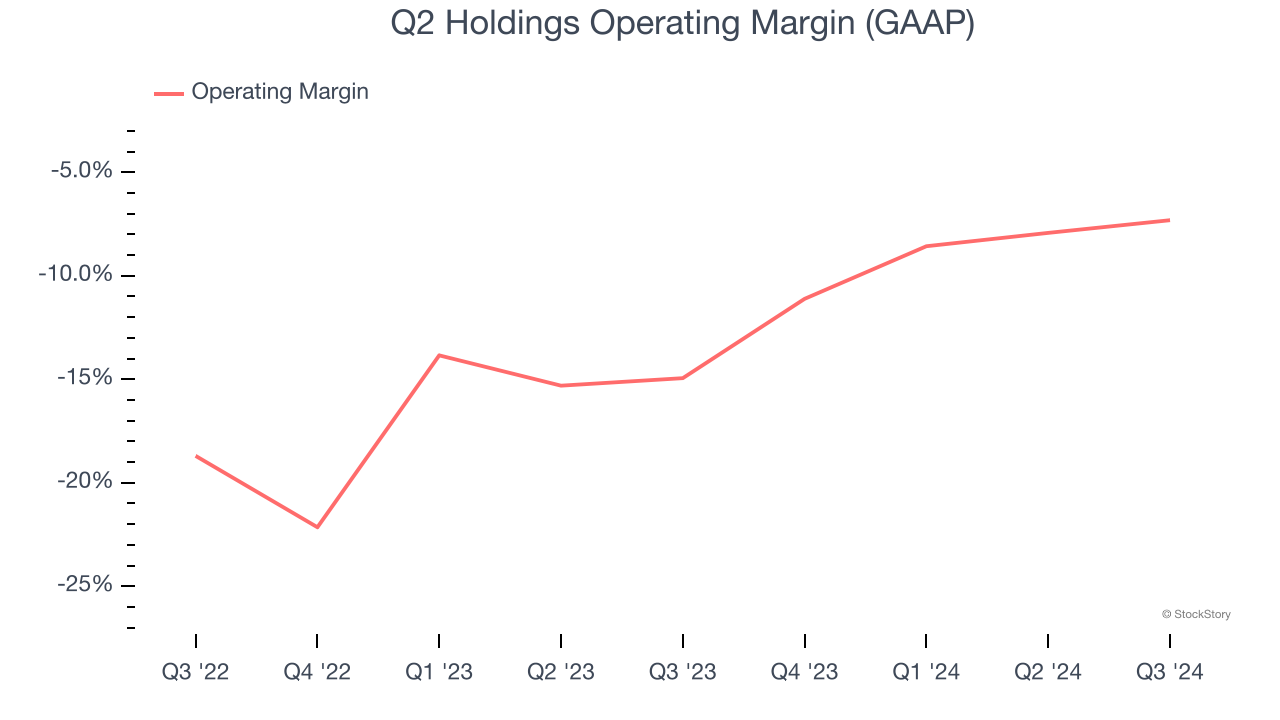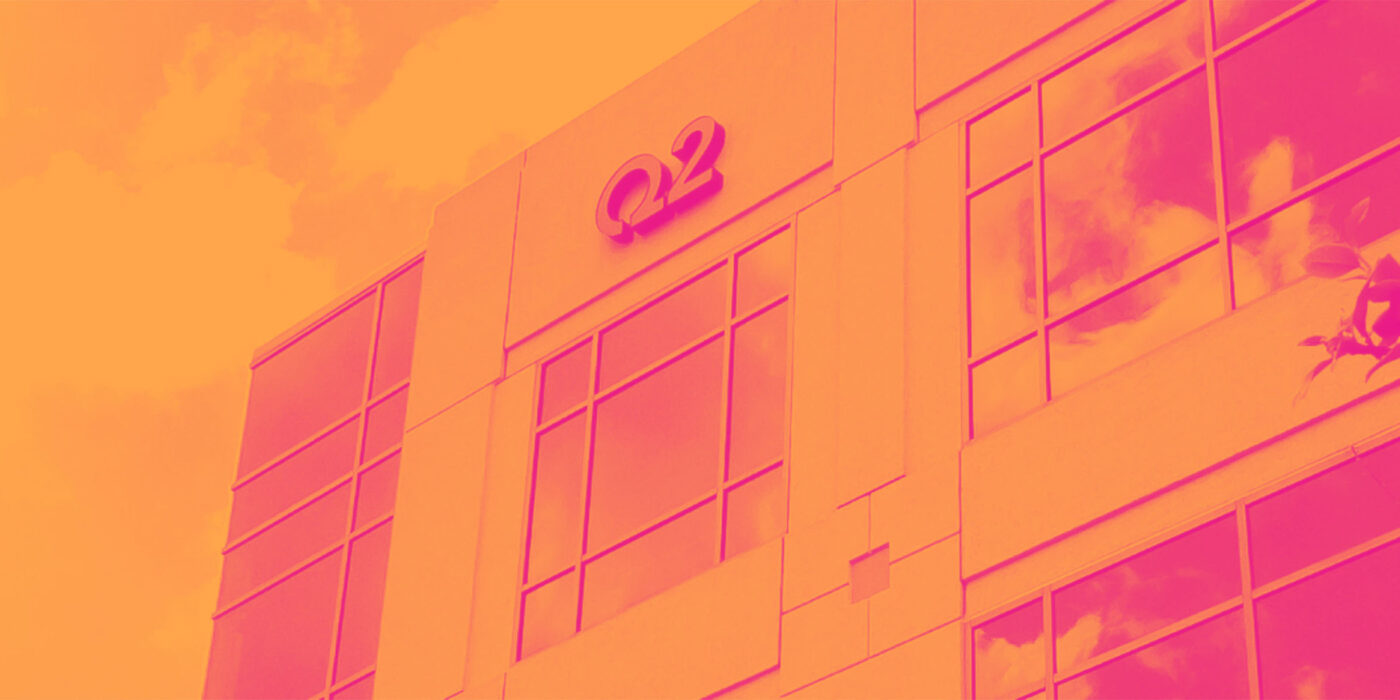Over the past six months, Q2 Holdings has been a great trade, beating the S&P 500 by 24%. Its stock price has climbed to $93.30, representing a healthy 33.2% increase. This was partly due to its solid quarterly results, and the run-up might have investors contemplating their next move.
Is there a buying opportunity in Q2 Holdings, or does it present a risk to your portfolio? Get the full breakdown from our expert analysts, it’s free.
We’re glad investors have benefited from the price increase, but we're swiping left on Q2 Holdings for now. Here are three reasons why QTWO doesn't excite us and a stock we'd rather own.
Why Is Q2 Holdings Not Exciting?
Founded in 2004 by Hank Seale, Q2 (NYSE:QTWO) offers software-as-a-service that enables small banks to provide online banking and consumer lending services to their clients.
1. Long-Term Revenue Growth Disappoints
A company’s long-term sales performance signals its overall quality. Even a bad business can shine for one or two quarters, but a top-tier one grows for years. Over the last three years, Q2 Holdings grew its sales at a 12.3% annual rate. Although this growth is acceptable on an absolute basis, it fell short of our benchmark for the software sector. 
2. Low Gross Margin Reveals Weak Structural Profitability
For software companies like Q2 Holdings, gross profit tells us how much money remains after paying for the base cost of products and services (typically servers, licenses, and certain personnel). These costs are usually low as a percentage of revenue, explaining why software is more lucrative than other sectors.
Q2 Holdings’s gross margin is substantially worse than most software businesses, signaling it has relatively high infrastructure costs compared to asset-lite businesses like ServiceNow. As you can see below, it averaged a 50.3% gross margin over the last year. Said differently, Q2 Holdings had to pay a chunky $49.74 to its service providers for every $100 in revenue. 
3. Operating Losses Sound the Alarms
Many software businesses adjust their profits for stock-based compensation (SBC), but we prioritize GAAP operating margin because SBC is a real expense used to attract and retain engineering and sales talent. This is one of the best measures of profitability because it shows how much money a company takes home after developing, marketing, and selling its products.
Q2 Holdings’s expensive cost structure has contributed to an average operating margin of negative 8.7% over the last year. Unprofitable software companies require extra attention because they spend heaps of money to capture market share. As seen in its historically underwhelming revenue performance, this strategy hasn’t worked so far, and it’s unclear what would happen if Q2 Holdings reeled back its investments. Wall Street seems to be optimistic about its growth, but we have some doubts.

Final Judgment
Q2 Holdings’s business quality ultimately falls short of our standards. With its shares beating the market recently, the stock trades at 7.6× forward price-to-sales (or $93.30 per share). This valuation tells us a lot of optimism is priced in - you can find better investment opportunities elsewhere. We’d recommend looking at the most dominant software business in the world.
Stocks We Would Buy Instead of Q2 Holdings
The elections are now behind us. With rates dropping and inflation cooling, many analysts expect a breakout market - and we’re zeroing in on the stocks that could benefit immensely.
Take advantage of the rebound by checking out our Top 9 Market-Beating Stocks. This is a curated list of our High Quality stocks that have generated a market-beating return of 175% over the last five years.
Stocks that made our list in 2019 include now familiar names such as Nvidia (+2,183% between December 2019 and December 2024) as well as under-the-radar businesses like Sterling Infrastructure (+1,096% five-year return). Find your next big winner with StockStory today for free.
